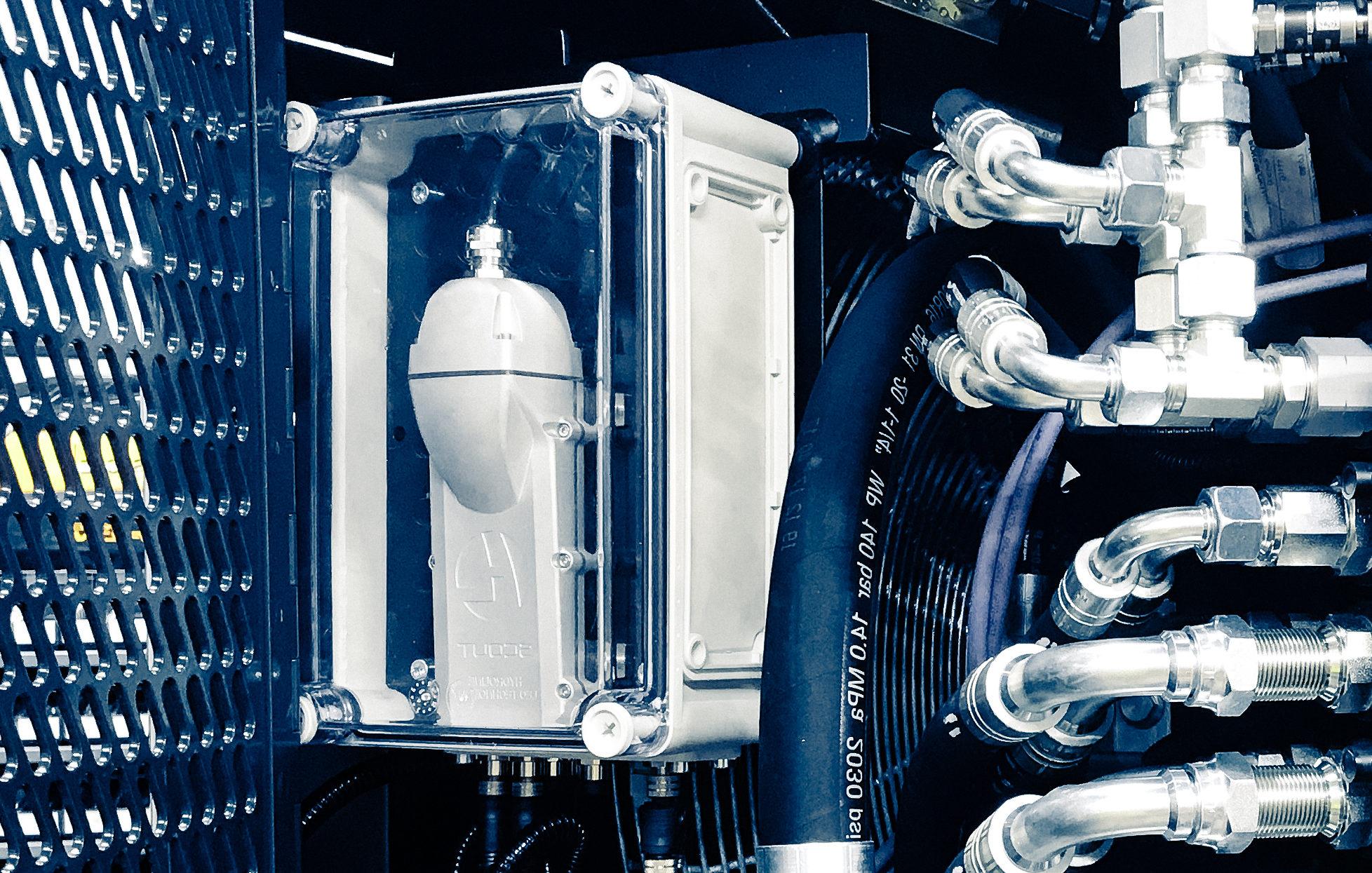Installation of LEO
On site, hydraulic cylinders face even the most harsh conditions and impurities which may cause cylinders to break. In order to avoid this, Hydroline has developed LEO, a system which can prevent your hydraulic cylinder from breaking down during work.
So, what is LEO? We have already told the main principles of LEO in our previous blog; you can read the whole text here. To put it briefly, Lifecycle Efficiency Online (LEO) is a system for monitoring the condition and operation of hydraulic cylinders on a machine. The system reports any anomalies in the use or operation of the hydraulic cylinders. LEO can thus support the smooth operation of hydraulic cylinders.
This time we will tell a little bit about how LEO is installed and what is the installation project like. The commissioning of LEO is done with two or three steps, depending on the situation.
How to install LEO
First, our expert from Hydroline Services discusses with you and gathers the needed background information about the machine and its cylinders in order to carry out the installation project smoothly and correctly. Our expert maps out, for example, what is the machine like and what kind of challenges the hydraulic cylinders of the machine have had before. This way, LEO is able to gather the exact data that helps the you and your company to solve the problems in hydraulic cylinder usage.
The next step is to check that the planned location of LEO’s condition monitoring unit is working, after which the locations of the data measuring sensors are designed. LEO’s condition monitoring unit needs to be attached to the machine itself or close enough in a place where it is not exposed to hits or other distractions. The cylinders’ sensors are attached to the monitoring unit with cables so the distance cannot be too long. For example, in a manufacturing line the monitoring unit is usually located in a proximity of the machine rather than to the machine itself.
The last step is to carry out the actual installation. The installation of LEO takes approximately three to four hours, depending on the location place. The pressure and locations sensors are installed with couplings. The pressure sensors are added to the hydraulic cylinders A and chambers (for more information about the structure of a hydraulic cylinder, read this blog). The sensor cables are routed from the sensors to LEO’s monitoring unit which then gathers and analyses the data from the cylinder. Finally, LEO is plugged in and the condition monitoring unit turns on.

One part of LEO’s implementation is training. Our representative goes through the whole system with you along with its operating principle and the usage of online portal. In the online portal you are able to access all the information LEO generates which helps you to understand to what kind of usage the hydraulic cylinder is exposed.
From the online portal, you are able to see for example, the following information:
- Hydraulic system pressure
- Location
- Number of changes in direction
- Moving distance
- Lifetime expectancy
- Leaks
- The whole project from the first discussion until the installation and commissioning is done according to the customer’s schedule.
During the installation and implementation process, it is important to take into account the factory’s or site’s own practices in occupational safety. In addition, during the installation itself, it is vital to have knowledge about the hydraulic system’s pressure so that, for example, there are no accidental oil bursts. Always remember: safety first.
Installing and commissioning LEO requires just a few things from the customer – our installer will take care of the rest. It is good for the customer to think about the possible location of LEO’s monitoring system in advance: after all, the customer usually knows their facilities and machines the best. Also, in a factory environment, the customer’s maintenance representative needs to review and accept the electrical installation before commissioning.
So, why should you choose LEO? All in all, the commissioning and installation of LEO are quite simple and do not require much from the customer. Hydroline Services provides all equipment needed during the installation and our expert takes care of the installing. The predictive maintenance system helps you to gather useful data from the machine. With LEO you are able to get an accurate image of the hydraulic cylinders’ condition. You’ll also get to know your machine better and are able to predict the maintenance as well as ensure that the machines stay at work without breaks.


